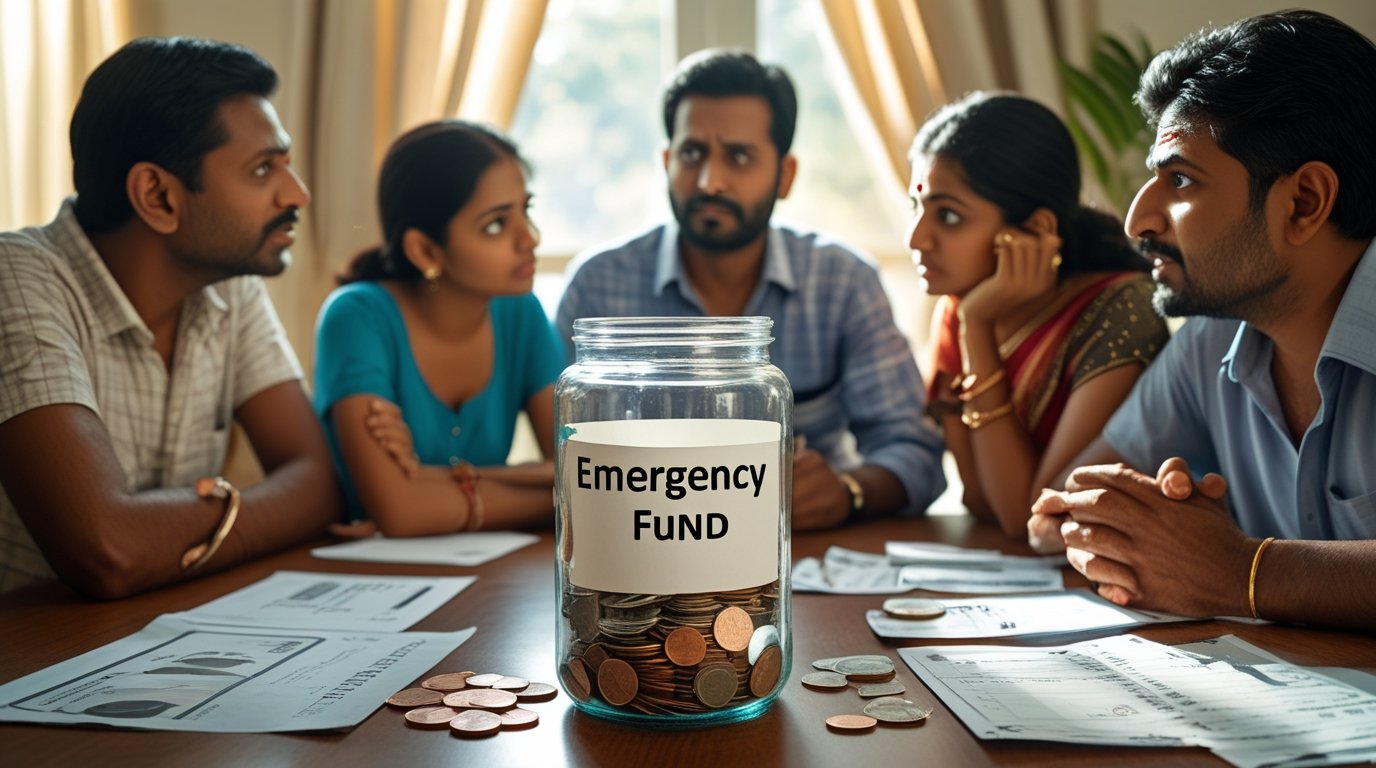Life is unpredictable. A sudden job loss, a medical emergency, or an unexpected car repair can throw your finances into chaos. Without a financial safety net, these events can lead to stress, debt, or even long-term financial instability. This is where an emergency fund comes in—a dedicated pool of money set aside to cover unexpected expenses. In this article, we’ll explore why an emergency fund is essential, how to build one effectively, and practical steps to ensure your financial security in 2025 and beyond. Whether you’re starting from scratch or looking to optimize your savings, this guide will provide actionable insights to help you achieve peace of mind.
What Is an Emergency Fund and Why Do You Need One?
An emergency fund is a savings account reserved for unexpected expenses or financial emergencies. Unlike other savings goals (like buying a house or funding a vacation), an emergency fund is designed to act as a buffer against life’s uncertainties. Here’s why it’s non-negotiable:
- Protects Against Debt: Unexpected expenses, like medical bills or home repairs, can lead to high-interest credit card debt if you’re unprepared.
- Reduces Financial Stress: Knowing you have a safety net provides peace of mind, allowing you to focus on other goals.
- Cushions Income Loss: A job loss or reduced hours can strain your budget. An emergency fund keeps you afloat during tough times.
- Prevents Disruption of Long-Term Goals: Without an emergency fund, you might dip into retirement savings or other investments, derailing your financial future.
Real-World Example
Take Sarah, a 32-year-old graphic designer. When her laptop crashed unexpectedly, she faced a $1,200 repair bill. Without an emergency fund, she would’ve relied on a credit card, accruing interest. Fortunately, her $5,000 emergency fund covered the cost, allowing her to avoid debt and continue her freelance work uninterrupted.
How Much Should You Save in Your Emergency Fund?
The ideal size of an emergency fund depends on your circumstances, but financial experts generally recommend:
- 3–6 Months of Living Expenses: This is the standard benchmark for most households. It covers essentials like rent, utilities, groceries, and insurance.
- 6–12 Months for Freelancers or Single-Income Households: If your income is variable or you’re the sole earner, aim for a larger cushion.
- 1–3 Months for Dual-Income Households: If you have a partner with stable income, a smaller fund may suffice.
Factors to Consider
- Job Stability: If your industry is volatile (e.g., tech or hospitality), lean toward a larger fund.
- Dependents: Supporting children or aging parents increases your financial responsibilities.
- Health and Insurance: High-deductible health plans or limited coverage may require a bigger buffer.
| Household Type | Recommended Emergency Fund Size | Example Monthly Expenses | Target Savings |
|---|---|---|---|
| Single, Stable Job | 3–6 months | $2,000 | $6,000–$12,000 |
| Freelancer | 6–12 months | $3,500 | $21,000–$42,000 |
| Dual-Income | 1–3 months | $4,000 | $4,000–$12,000 |
How to Build an Emergency Fund in 2025
Building an emergency fund may seem daunting, especially if you’re living paycheck to paycheck. However, with a clear strategy, it’s achievable. Here’s a step-by-step guide:
Step 1: Set a Realistic Goal
Start small. Aim for $500–$1,000 as an initial target to cover minor emergencies like car repairs or medical co-pays. Once you hit this milestone, gradually work toward 3–6 months of expenses.
Step 2: Open a Dedicated Savings Account
Keep your emergency fund separate from your checking account to avoid temptation. Look for:
- High-Yield Savings Accounts: Online banks like Ally or Marcus by Goldman Sachs offer competitive interest rates (around 4–5% in 2025).
- Easy Access: Ensure you can withdraw funds quickly without penalties.
- Low or No Fees: Avoid accounts with maintenance fees that eat into your savings.
Step 3: Automate Your Savings
Set up automatic transfers to your emergency fund each payday. Even $25 per week adds up to $1,300 in a year. Automation ensures consistency and reduces the urge to spend.
Step 4: Cut Unnecessary Expenses
Review your budget for areas to trim:
- Subscriptions: Cancel unused streaming services or gym memberships.
- Dining Out: Cook at home more often to save $50–$100 monthly.
- Shopping: Avoid impulse purchases by sticking to a list.
Step 5: Boost Your Income
Consider side hustles to accelerate your savings:
- Freelancing: Offer skills like writing, graphic design, or tutoring on platforms like Upwork.
- Gig Economy: Drive for Uber or deliver for DoorDash.
- Sell Unused Items: Declutter your home and sell items on eBay or Facebook Marketplace.
Step 6: Protect Your Fund
- Don’t Touch It for Non-Emergencies: Reserve the fund for true emergencies, not vacations or new gadgets.
- Replenish After Use: If you dip into the fund, prioritize rebuilding it.
Case Study: Building an Emergency Fund
Meet John, a 28-year-old teacher with $2,500 in monthly expenses. He started with $0 in savings but committed to saving $100 per month by cutting dining out and automating transfers. Within a year, he had $1,200. A side hustle tutoring students added $200 monthly, growing his fund to $3,600 in two years—enough for a basic safety net.
Where to Keep Your Emergency Fund
Your emergency fund should be safe, accessible, and earn some interest. Here are the best options in 2025:
| Option | Pros | Cons |
|---|---|---|
| High-Yield Savings Account | High interest, easy access | Interest rates may fluctuate |
| Money Market Account | Competitive rates, check-writing | May require higher minimum balance |
| Certificates of Deposit (CDs) | Higher interest rates | Limited access without penalties |
Avoid: Stock market investments or cryptocurrencies, as they’re too volatile for emergency funds.
What’s New in 2025: Emergency Fund Trends
- Rising Interest Rates: With inflation stabilizing, high-yield savings accounts are offering 4–5% APY, making it easier to grow your fund.
- Digital Tools: Apps like YNAB (You Need a Budget) or Qapital help automate savings and track progress.
- Economic Uncertainty: Layoffs in tech and other sectors highlight the need for larger emergency funds in 2025.
FAQ Section
What Qualifies as a Financial Emergency?
A financial emergency is an unexpected expense that impacts your ability to cover basic needs. Examples include:
- Medical bills not covered by insurance
- Urgent car or home repairs
- Job loss or reduced income
Non-emergencies include planned expenses like holidays or elective purchases.
How Fast Can I Build an Emergency Fund?
The timeline depends on your income, expenses, and savings rate. For example, saving $100 monthly takes 10 months to reach $1,000. To speed up the process:
- Increase your savings rate by cutting expenses.
- Take on a side hustle.
- Redirect windfalls like tax refunds or bonuses.
Can I Use My Emergency Fund for Debt Repayment?
Generally, no. An emergency fund is for unexpected expenses, not planned debt repayment. However, if a high-interest debt (e.g., 20% APR credit card) is spiraling, using part of your fund to pay it down may be wise, provided you replenish the fund quickly.
Should I Invest My Emergency Fund?
No. Investments like stocks or crypto are risky and can lose value. Keep your emergency fund in a safe, liquid account like a high-yield savings account to ensure accessibility and stability.
Conclusion
An emergency fund is your financial lifeline, protecting you from life’s unexpected challenges. By setting clear goals, automating savings, and making small lifestyle changes, you can build a robust safety net in 2025. Start small, stay consistent, and prioritize accessibility to ensure your fund is ready when you need it. Have questions or tips for building an emergency fund? Share them in the comments or sign up for our newsletter for more financial insights!
Suggested Visuals
- Infographic: “Steps to Build an Emergency Fund”
- Chart: “Emergency Fund Size by Household Type”
- Video: “How to Save $1,000 in 6 Months”

